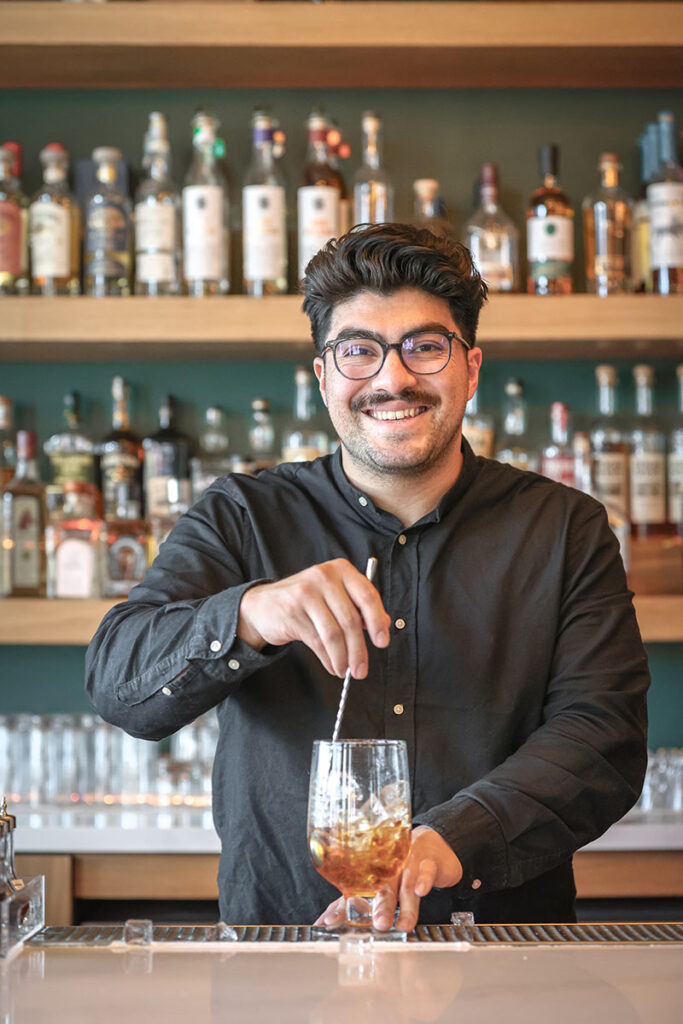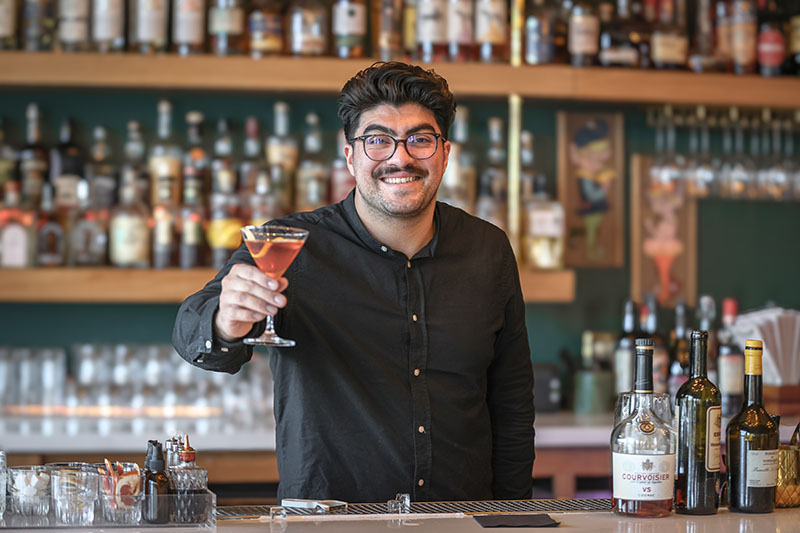Vermouth adds flavor and depth to both cocktails and food.
Vermouth may be a fortified wine, but the beauty is in its simplicity.
Bless the Spaniards and Italians for encouraging drinking a higher-alcohol wine at lunchtime in order to encourage a healthy appetite.
Vermouth, popular in countries such as Spain, Italy, France, and Portugal, is a fortified wine steeped with herbs and spices such as cloves, citrus peel, cardamom, anise, and juniper. Its name is derived from the German name for wormwood, which was used as an original flavoring in the 1800s.
While vermouth recipes vary, they are typically categorized as dry or sweet. The dry version is made with white wine and is known for enhancing the classic martini. Sweet vermouth is made with red wine, sweetened with sugar, and in Spain is typically served on ice with a lemon twist.
In general, vermouth has about 10 percent more alcohol content than regular wine and adds flavor and depth to both cocktails and food.
Of the Land
“Within craft cocktails, vermouth is used as an extra nuance to add layers,” says Ivan Fontana, co-owner of Amari, a bar in Reno. “It just adds to the body of the cocktail.”
Vermouth also imparts a bit of European flair to whatever you’re concocting.
“If [the vermouth is] made by the seaside, you are going to get the salinity in the air. It will also depend on what grapes [the makers] are using for their region and where they are grown,” Fontana says. “Vermouth is very terroir-based, which is why it’s fun to have a slew of vermouths because every single one will pair differently with the style of cocktail you are making.”
Some of Fontana’s favorite vermouths include versions by Yzaguirre, Carpano, and Cocchi. He adds that it’s very important to refrigerate vermouth after the bottle has been opened, or it will oxidize. He also suggests making vermouth an investment.
“One should spend more on their bottle of vermouth than they spend on their bottle of gin, bourbon, rye, or cognac,” he says. “If you get a cheap vermouth, it will spoil the cocktail.”
Embracing the Vermouth Culture
Marcos Leon, bar manager of The Emerson in Midtown Reno, uses vermouth in cocktails such as the corpse reviver No. 1 (as well as the dozens of other versions), but he also hopes that drinking it straight, as the Europeans do, will catch on here.

“It’s lighter and you can have it in a spritz,” Leon says. “The Spanish culture encourages drinking vermouth with a little bit of soda and a twist of lemon on a summer day. We don’t really see that here in America.”
Leon encourages experimenting with vermouth in both simple cocktails and dishes.
“Of course, we’ll use it in a martini or sip it over ice, which is really nice. Add some bubbles, like prosecco or club soda, and garnish it with whatever you want,” he says. “But keep it simple; don’t use something like chocolate.”
Leon also uses vermouth in place of wine in sauces or to deglaze a pan when cooking. Because of the more intense flavors in vermouth, he recommends using less than you would regular wine.
“Don’t overthink it when it comes to vermouth; drink it however you want to drink it,” Leon says. “Some people overcomplicate things when it comes to cocktails.”
Make It Yourself
It might be intimidating to venture into the complex world of vermouth, but making your own is easy with the Homemade Vermouth Kit from High Desert Botanicals in Carson City.
“There are so many different flavors of vermouth,” says Janel Johnson, co-owner. “We experimented with different blends until we found something that we liked.”

The kit comes with herbs and spices such as cardamom, nutmeg, star anise, and wormwood. Some of the ingredients are packaged separately, so you can adjust the flavor as needed.
“I like a light and spicy vermouth, so our recipe tends toward that side of the flavor spectrum,” Johnson says. “I actually really like to blend ours with flat hard cider.”
The kit also solves the problem of the oxidation issue. You can make as much as you need at the time you need it. High Desert Botanicals also sells kits for making your own bitters, mixers, and mulled wine.
“This is why we started our company,” Johnson says. “A lot of these recipes for bitters and vermouth call for a very small amount of some obscure herb. So I started putting together these kits with a little bit of a whole spectrum of spices, so people could experiment without having 10 pounds of herbs they are never going to use.”
RESOURCES
Amari
Amarireno.com
The Emerson
Theemersonreno.com
High Desert Botanicals
Highdesertbotanicals.com/products/vermouth
Corpse Reviver #1
(courtesy of Tyler Colton, owner, The Emerson in Midtown Reno. Serves 1)

1 ounce Calvados
1 ounce cognac
½ ounce sweet vermouth
Orange peel, for garnish
Add liquid ingredients to a mixing glass with ice, then stir for a good 15 seconds. Strain into a coupe or martini glass and garnish with an orange peel.


